trees. trees? trees!
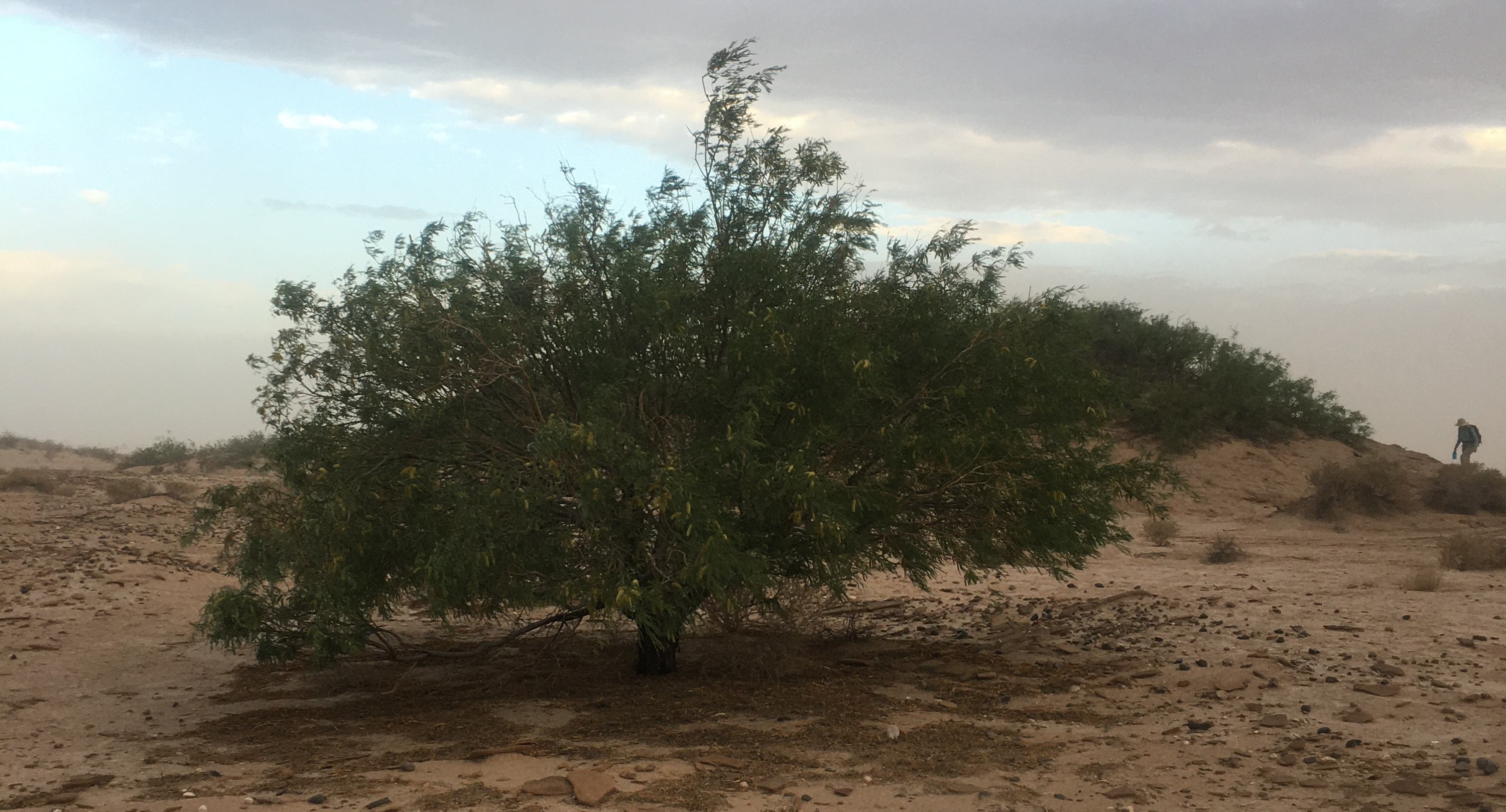
Beatrice and I arrived in El Centro knowing nothing about the desert. Nothing. I rolled up to the western hotel surrounded by sunset, parked my Subaru Forester next to hers (feeling quite silly), and there we were. Ridiculous! Two people either brave or stupid enough to take this job, meeting for the first time.
So as the sky faded from bright orange to purple, we sat in the hotel room eating chips, getting acquainted, and cackling at the absurdity of it all (I, at least, was cackling). And of all the strange thoughts and questions, most funny of all was the idea that we would find trees in the desert. Trees in the desert? In the desert. Actual trees? This desert? Not one tree, but a whole-ass patch of ‘em. A grove! 50 + trees? Ridiculous.
As I said, we knew nothing about the desert.
We have quite a few trees on our list of species to find, and in order to make a collection, we need at least 50 plants. “Maybe with trees it’s just different?”, I hoped. “A tree is, like, really really big compared to a bush!! Maybe we just need to find ONE tree, two at the most. Even if they’re 3 miles from each other, maybe that’s ok. There must be a different rule….” I confidently blathered “An exception! Because we’re in the desert. Even finding one tree is hard. Can you imagine?”
Oh, I could imagine: we’re trudging through an expanse of sand in the midday sun. We’ve been walking for miles. It’s flat as far as the eye can see, generally desert-looking, except for a spot far up ahead - there’s a slight shimmer! Is it a mirage? No! A tree! A miracle, a sign of life. Spreading its branches to craft the first patch of shade we’ve seen all day. We found it! Huzzah! The lone desert tree.
Or something like that. After that ordeal, how could our bosses really expect us NOT to collect from that blossoming tree, even though it is growing alone?
“Yeah, I don’t know” said Beatrice “we’ll have to get out there and see”.
And we laughed, I cackled, probably spilled my salsa. Ridiculous!
~ ~ ~
Well, as I’m sure many of you are well aware, turns out there are plenty of trees in the desert.
Tall trees, short trees, stocky, spindly, bushy, spreading, leafy or bare. Sure, many of them lean toward bush-sized, but there are big ones, too! There’s a whole selection of trees, with the one consistency being their determined spikey-ness. We are, after all, in the desert.
So, as a result of this wonderful surprise, we’ve spent much of the past two months walking through washes and groves, counting and gaping at trees. And wow! Putting my initial ignorance aside, it continues to blow my mind that beings this large and this old are able to thrive in such variable conditions on almost no water. They are tenacious and, to my little brain, unfathomably resourceful. They also serve as a lush habitat for countless others in this harsh environment, generously providing shade, height, shelter from the wind, flowers and food. I can hear the buzz of pollinators each time I walk up to a flowering tree, and I know that this is just scratching the surface. There is so much going on both underground and outside of my gaze. So here are a few of these new acquaintances, and a thing or two about them!
~ ~ ~
Over the past few weeks, most of these trees have gone from bare or budding to full bloom. It’s been very dramatic to watch. Also, just a heads up, all but one of these trees are in the pea (Fabaceae) family.
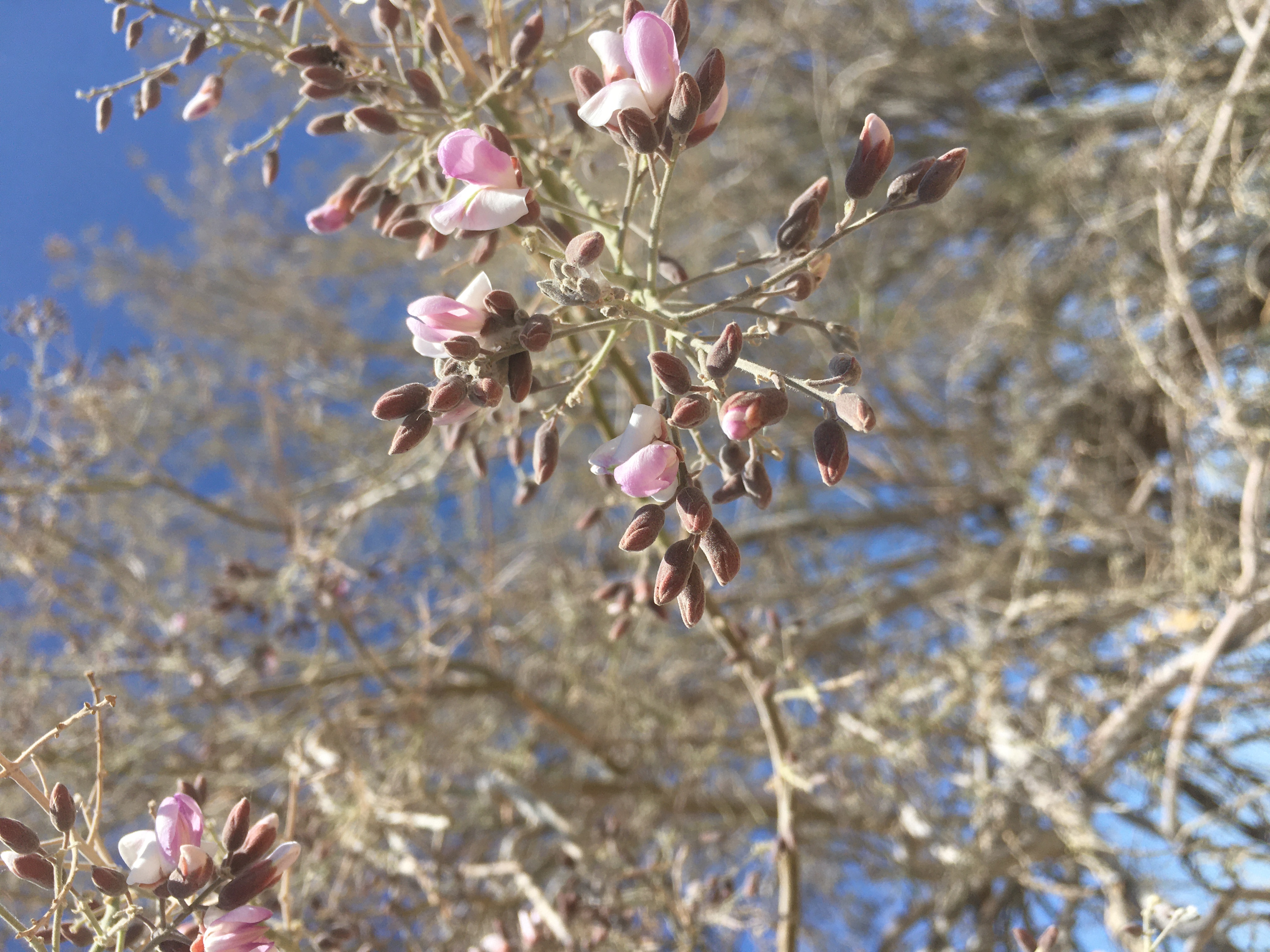
Desert ironwood (Olneya Tesota)
These flowers truly blew my mind upon my first encounter with them (I have shared pictures before). The color is so stunning! They are also a great example of a classic pea flower - the petals form a banner, wing and keel. What I love most about the Olneya is the way their branches grow in the most absurd patterns. I become easily lost looking up at them. New shoots will grow straight up out of larger trunks or branches and smaller ones will turn at aggressive angles, sometimes literally doing a 180 back on itself. And they all do this, forming the craziest shapes. The branches zig and zag and shoot and turn their way up toward the sky, then allow the newest growth to come tumbling down draped in buds and flowers. The new growth is also a dramatically different color than the old (smooth white vs brown), and older branches bend down, die off, and form a dense skirt around the bottom of the tree. Apparently this creates valuable habitat (providing shade and accumulating nutrients) for young plants as well as rodents and other critters (thanks Beatrice, for researching this and sharing with me!).
Spike situation? Stipular spines present on new growth. (stipular spines are pairs of spikes located at the base of leaves). Spikes along branches as well. There seems to be a lot of variation in size and shape of spikes on this tree!
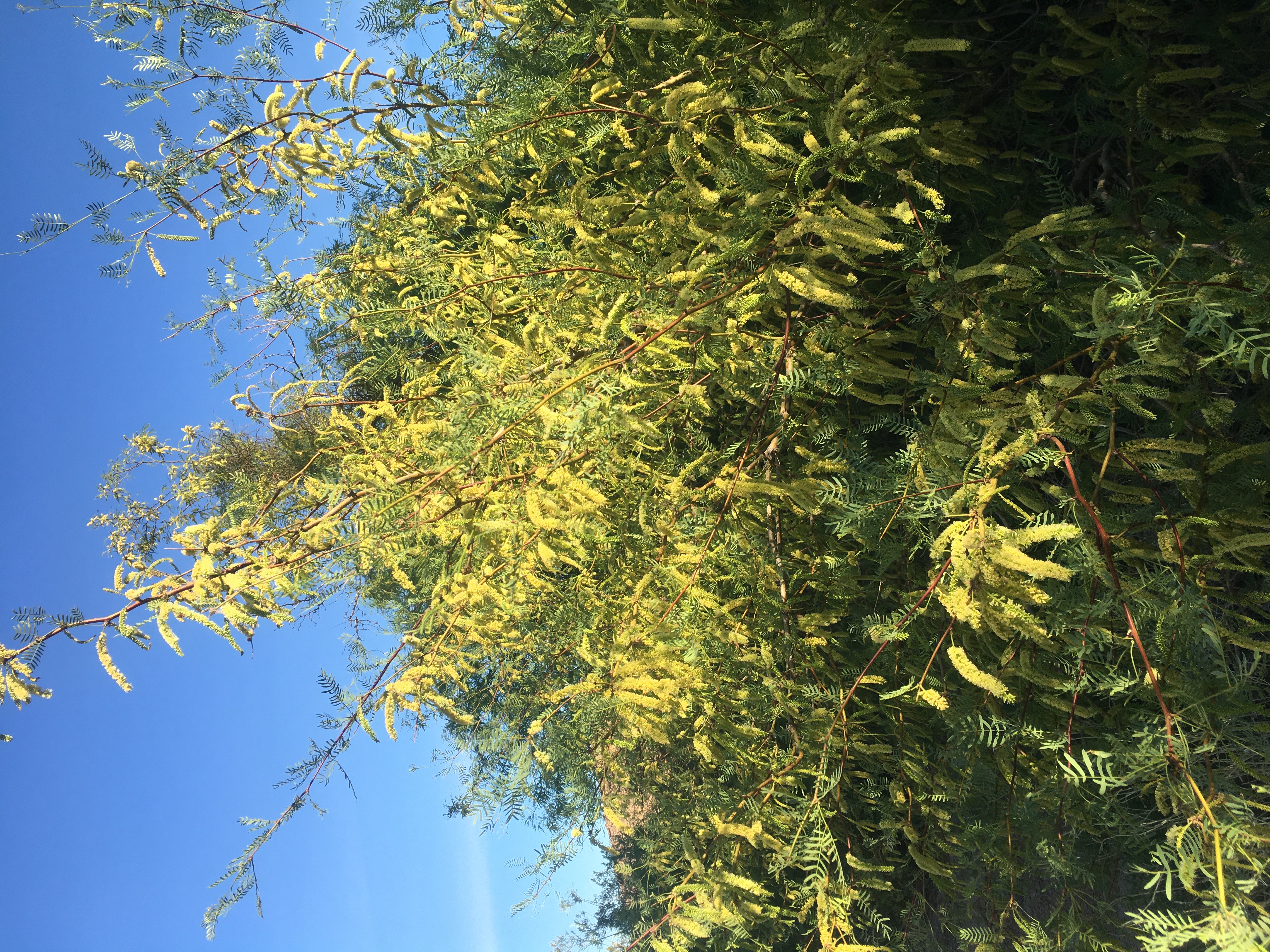
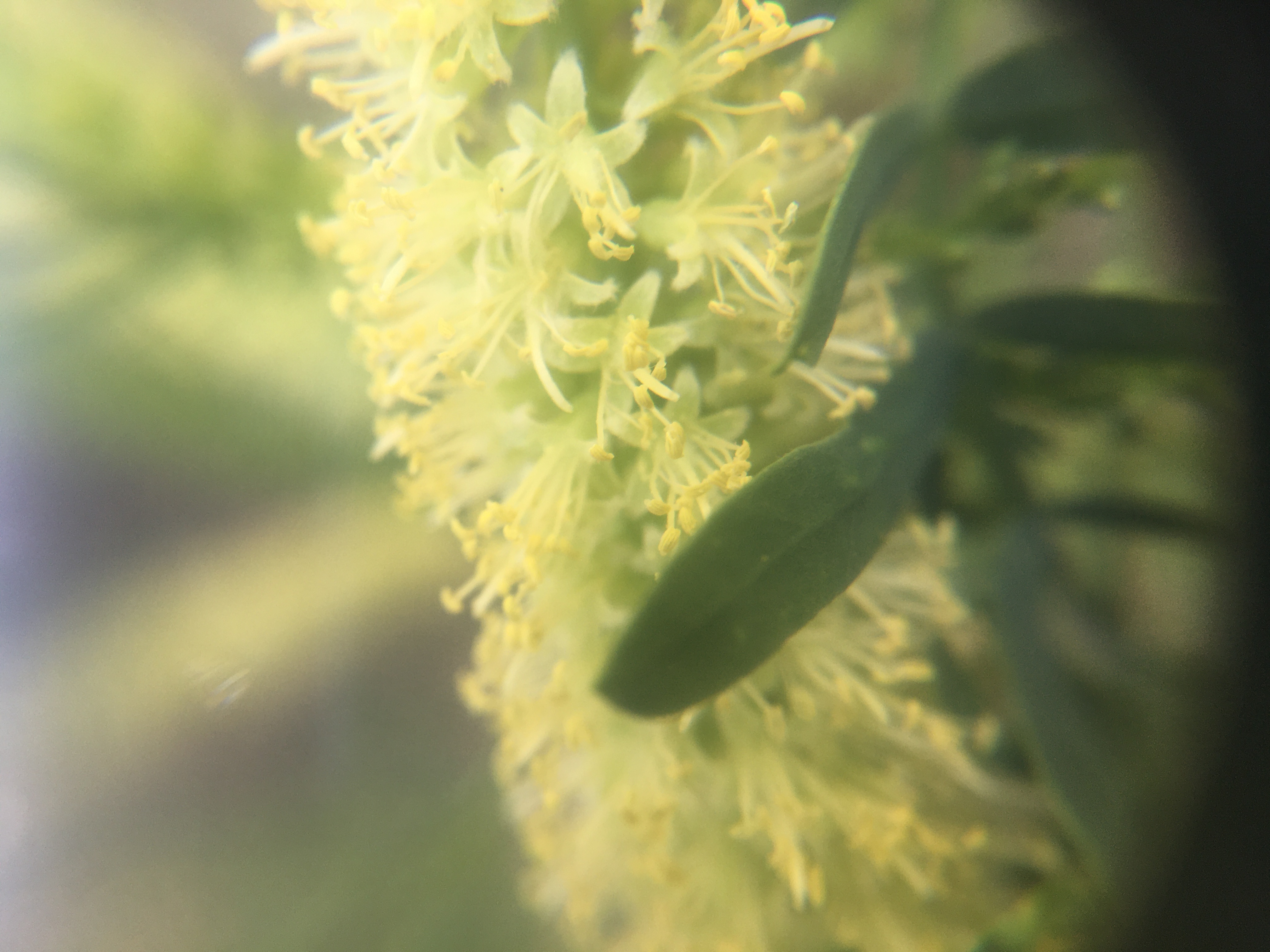
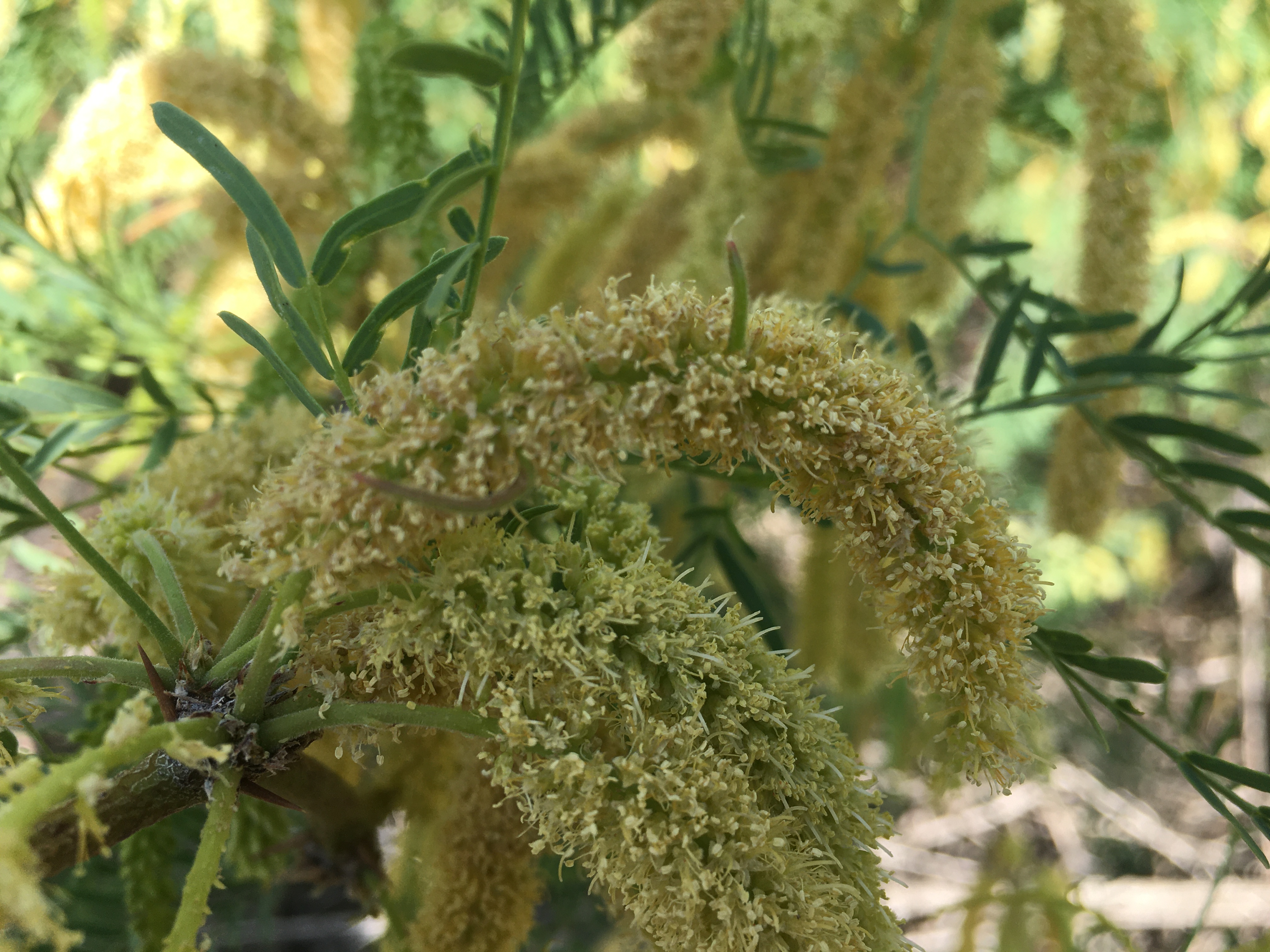
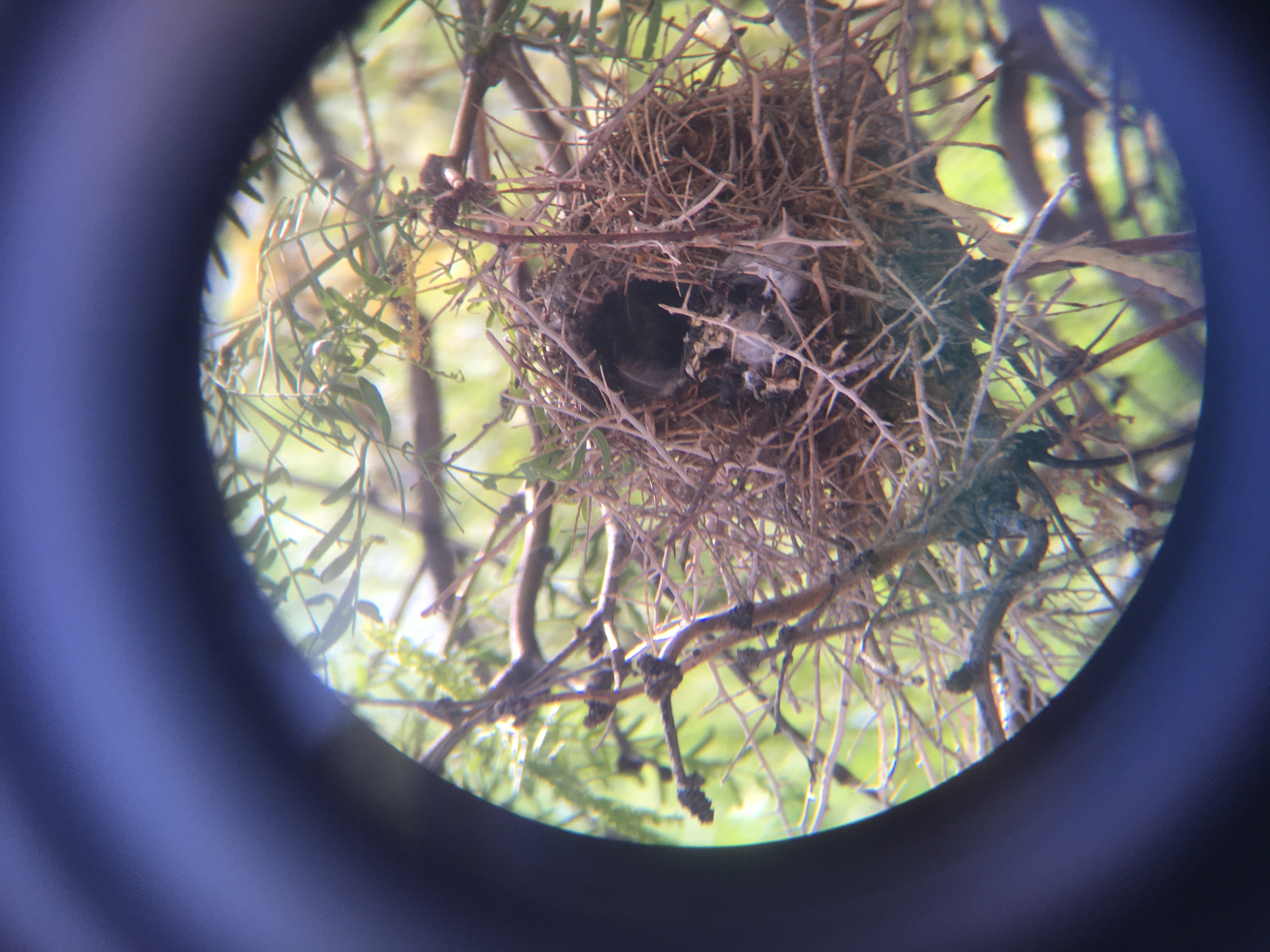
Oh, sweet,sweet honey mesquite.
This past Monday, we spent the morning wading through dead brush and climbing our way through tangled thickets of honey mesquite. This particular population was growing in what was once a marsh on the north side of the Sawtooth mountains. It is a wild area, very biodiverse, dense, and full of surprises. There is evidence of someone trying to clear it at one point, though it doesn’t seem that they got very far, and there are huge patches of piled-up dead brush alongside dense living populations. It is also the location where we made our very first seed collection - cattle saltbush (Atriplex polycarpa). The honey mesquite forms a huge forest and was in full bloom on Monday, adding a sweet smell to the air. They grow so densely that it is impossible to make it very far, so we navigated from clearing to clearing, each of which is surrounded by trees. We were also looking for a less common Prosopis: the screwbean mesquite! They look similar, but the screwbean forms fruits that are twisted into a tight corkscrew (we found some of last year’s on the ground; they are very cool), and seemed to be less far along in terms of developing leaves and fruit. After exploring the area for a while, we found about 30 screwbean mesquite (Prosopis pubescens) mixed in - not enough to collect from but still exciting! Anyway….that was a tangent….on to Prosopis glandulosa and what’s cool about her…
The way this tree grows varies dramatically. In some locations, such as the one I just described, they will stretch up to 30 (?) feet high, while in other places they spread wide but remain about waist height. I imagine this has something to do with the amount of water or nutrients they are getting, but I suppose it could be other factors as well: age? Local variation due to wind or flooding? Any thoughts? In one location, each Prosopis plant (or multiple plants, it’s hard to tell) seemed to form/grow out of big hills of sand. Could not tell exactly how the Prosopis was forming these, but it seemed to have something to do with sand being blown onto the trees. I wonder whether each mound was one tree, with the middle just covered in sand. Across the board, these trees are dense, even the tall individuals forming a thicket that reaches down to the ground. Seems to be a trend with trees around here. Their thick trunks and branches will grow vertically along the ground as well, forming a jungle gym of branches.
Spike situation? Oh, this friend has large, needle-like spikes that stick straight out. Flexible, but definitely pokey.
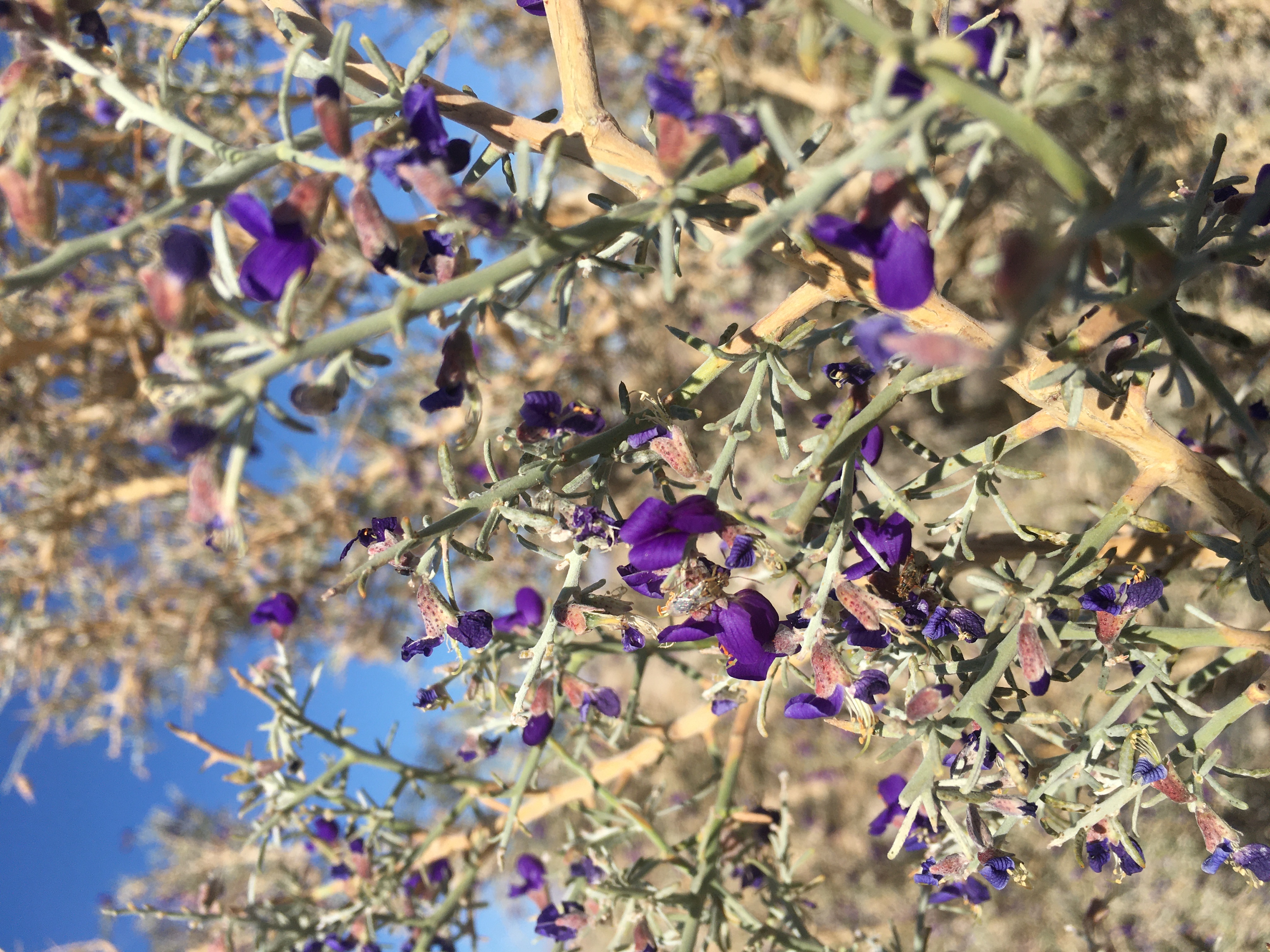
Schott’s dalea (Psorothamnus schottii)
We have 2 species of Psorothamnus on our list: Schott’s dalea, and the Smoke tree (Psorothamnus spinosus). In general they have not been putting out many flowers yet, but this particular tree was going for it! Another classic example of pea flowers. And all of the Psorothamnus species we’ve encountered have bright orange glands on the flowers, and sometimes on the leaves and stems as well.
Spike situation? Well, the Psorothamnus spinosus is spikey (would be a shame if it wasn’t). Its branches all form sharp points at the tips. The Schott’s dalea has these less aggressive spikes intermittently on the stems.
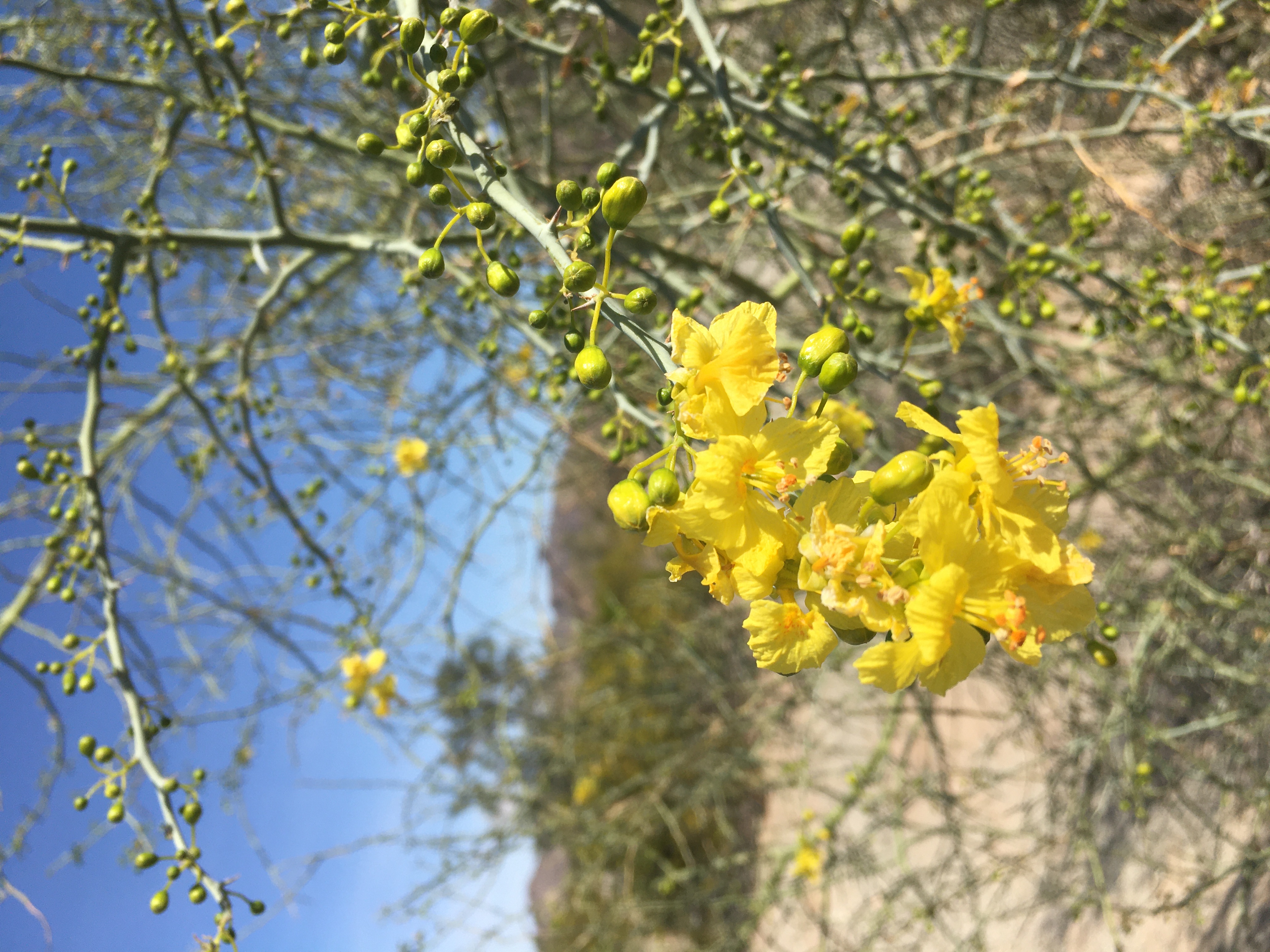
Palo Verde is well named: green stick. Sometimes the older trunks will become gray, but for the most part the whole tree is a blueish green. Even large branches display smooth, green bark. I’ve mentioned it before, but I love the way the branches of this tree grow so long and drape down towards the ground, looking like string or rope. Over the past week, flowers have just begun to shrivel, with little green seed pods forming alongside their tired petals. Another characteristic of all these peas: pods!
Spike situation? Stipular spines (when there are leaves), and some scattered thorns along branches.
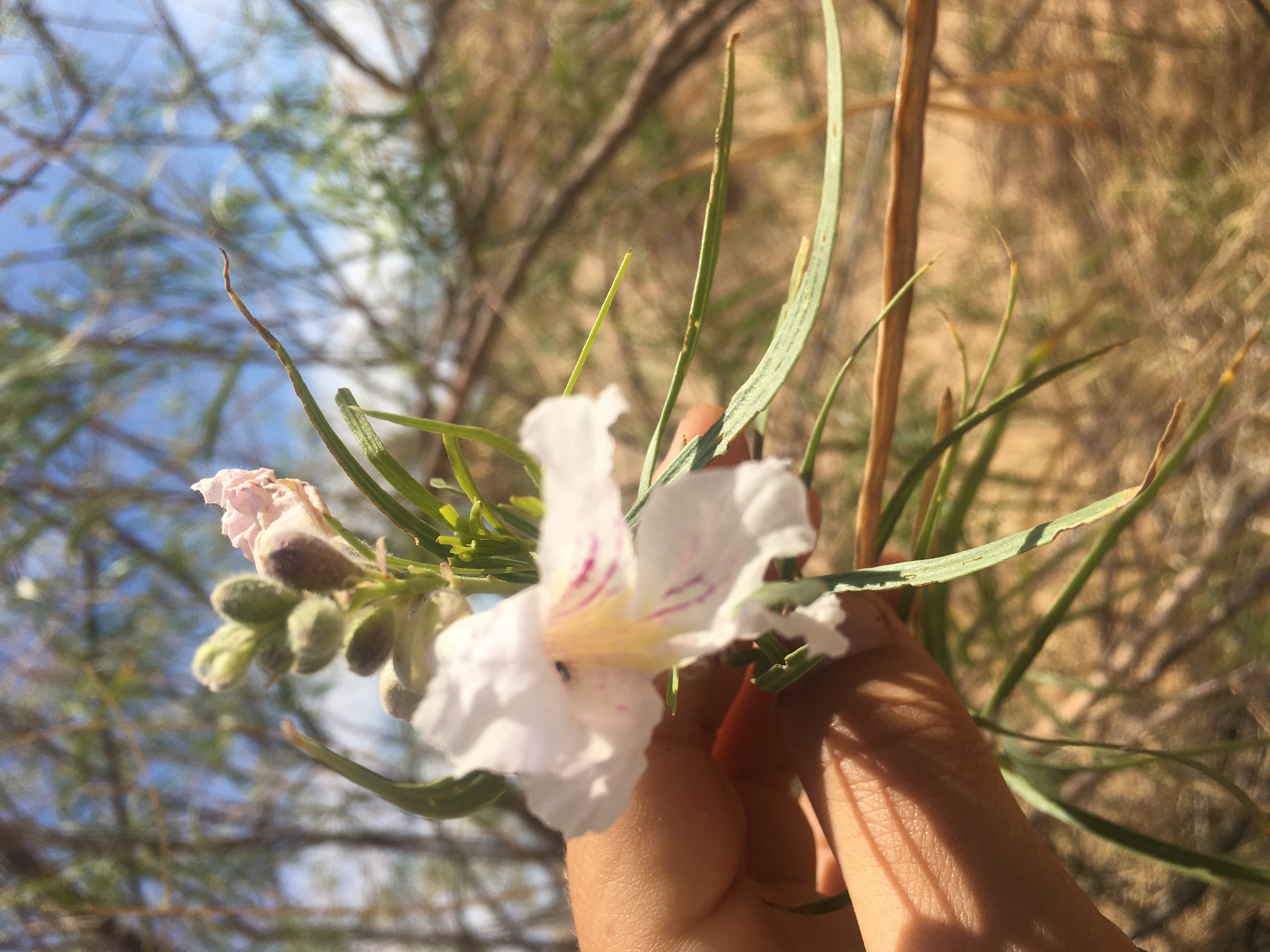
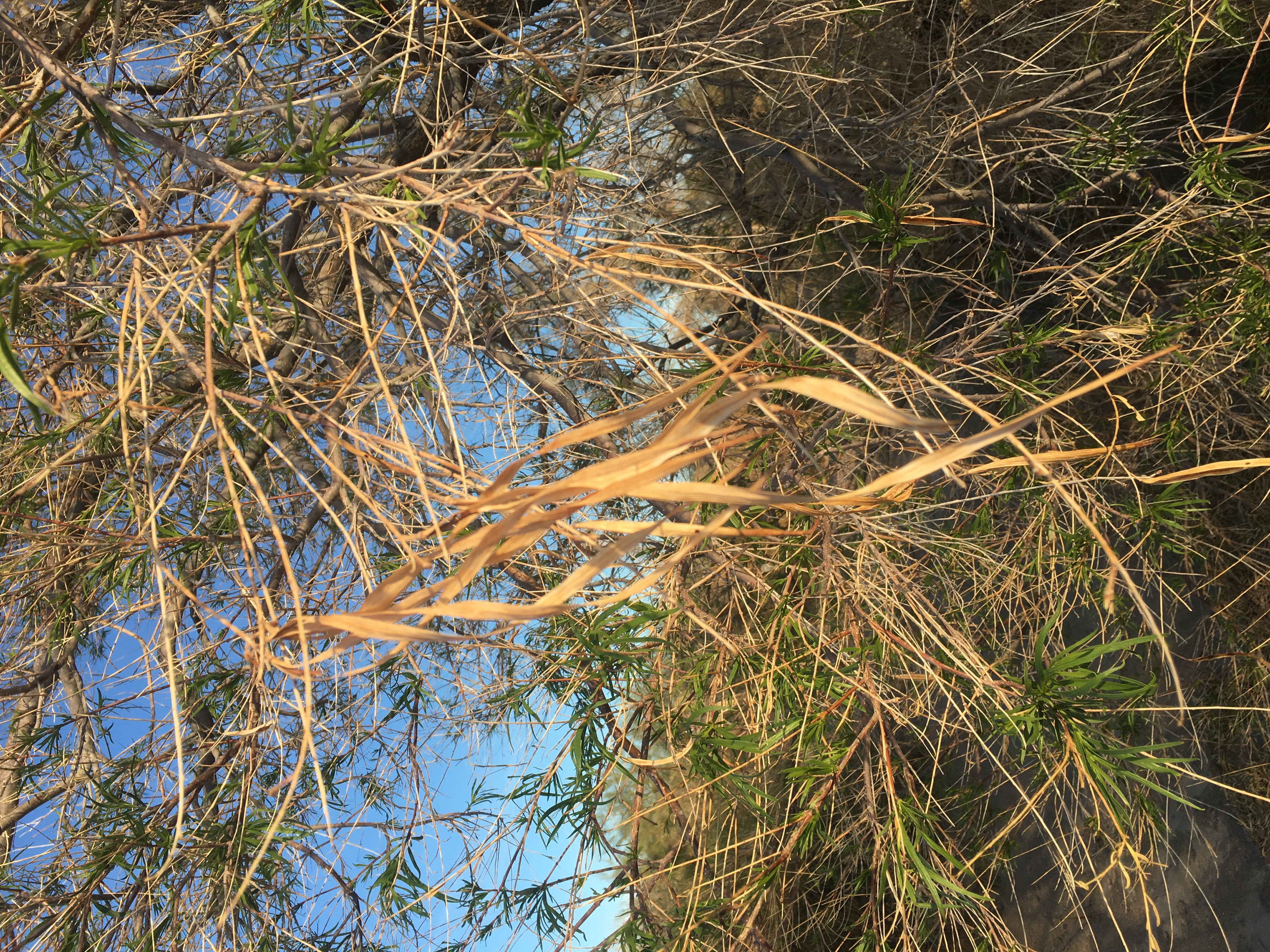
The desert willow is not a willow, but a member of the begonia (Bigoneaceae) family, the only one native to this area. Their long leaves and the way they grow on slender branches forming clumps from the ground do somewhat resemble willows. We often find populations of them in open, sandy areas. I am excited to encounter their long, twisted seed pods!
This gentle friend is spike-less. Very brave.
~ ~ ~
That’s all for now, happy romping ;)
maya